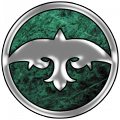Anda
Introduction
The Anda were a Gangrel offshoot, created by a Methuselah called Dobrul the Brave. Dobrul, a wanderer with great respect for the Mongol hordes, Embraced several of their warriors. These vampires became the spirit warriors of the steppe, following the nomadic Mongol tribes and protecting them from outward threats.
The Anda had intricate rites governing the Embrace of new Kindred. Once a candidate was selected, any Anda in the area met for a discussion on that candidate’s qualities. The prospective Tartar had to be an impressive warrior, but tempered enough in nature to understand that only by protecting his tribe from outward supernatural threats could he keep it healthy enough to feed from. Once the decision was made, the prospective sire would wash the candidate in a river, a ritual funerary bathing in the Mongol tradition. He would then drain and Embrace the new vampire.
This kind of ritual and observance governed much of the Anda’s existence. Long and lonely nights wandering the steppe, either with the Mongols or alone (and they did wander alone, sometimes even into Western Europe), the Anda’s Beast was the only company. Small wonder that these Kindred viewed themselves as spiritual warriors, their brutal ethos the only bulwark against madness and depredation.
The Anda made war against a variety of foes. They would join their nomad tribes against whatever enemies they chose (as far as they could, since not all battles were fought at night). They also clashed with native Chinese shapeshifters and vampires, and it was this latter group that proved the undoing of the Anda in the 14th century. The bloodline’s heyday was the reign of Kublai Khan, and during this time they could be found openly celebrating their undead nature in China. When Kublai died, the Anda fell into decline, and in the modern nights none are known to exist.
Nickname: Tartars
Sect: Wandering Anda might join a particular vampire’s court, at least for a time, but their irresistible push to keep moving prevented them from becoming permanent fixtures anywhere in Europe. In their own lands, they watched over Mongol tribes called yasun, parasitically protecting and feeding from the mortals.
Appearance: The Anda Embraced exclusively from the Mongol tribes, so they were short, stocky, and bowlegged from a lifetime of riding. The skin of an Anda faded to an odd brown-yellow following the Embrace.
Haven: The Anda dwelled on the steppe, far enough away from their yasun to avoid discovery, but close enough to catch up with them when night fell. The truly monstrous or depraved among them did not protect a tribe, but led a solitary unlife, feeding as opportunity permitted. These poor souls typically fell to torpor from hunger, and if any Anda still exist, it is likely one of these horrors, sleeping buried somewhere in China.
Background: The Anda did not Embrace capriciously. They chose their candidates carefully, since this choice made a statement about who would protect their people. All Anda were skilled horsemen, trackers, warriors, and, to some degree, shamans.
Character Creation: Unlife on the steppe was harsh. Physical Attributes were generally primary, with Talents and Skills sharing priority (especially martial ones — all Anda had some facility in Melee, Brawl, and Survival). All of the Anda’s Disciplines were important, but neonate Anda generally found that learning Earth Meld was a matter of survival.
Clan Disciplines: Animalism, Fortitude, Protean
Weakness: Like the Gangrel from which they were descended, Anda gained animal features from frenzying. Unlike the Gangrel, though, Anda gained such a feature once every other frenzy. However, the Anda suffered a further weakness — for each day after the third that an Anda slept within the same one-mile area, all dice pools were halved (to a minimum pool of one).
Organization: On the night of the new moon, all Anda within a given radius met to discuss the movements of their yasun and what kinds of threats might require their collective attention. The eldest Anda in such a gathering was called the khan, and all others were expected to submit to his authority.
Quote: I am not a monster. I am a shepherd. I protect the sheep from wolves like you, because I wish to eat them.
4th Generation
5th Generation
6th Generation
7th Generation
8th Generation
9th Generation
10th Generation
11th Generation
12th Generation
13th Generation
Those of Unknown Generation
